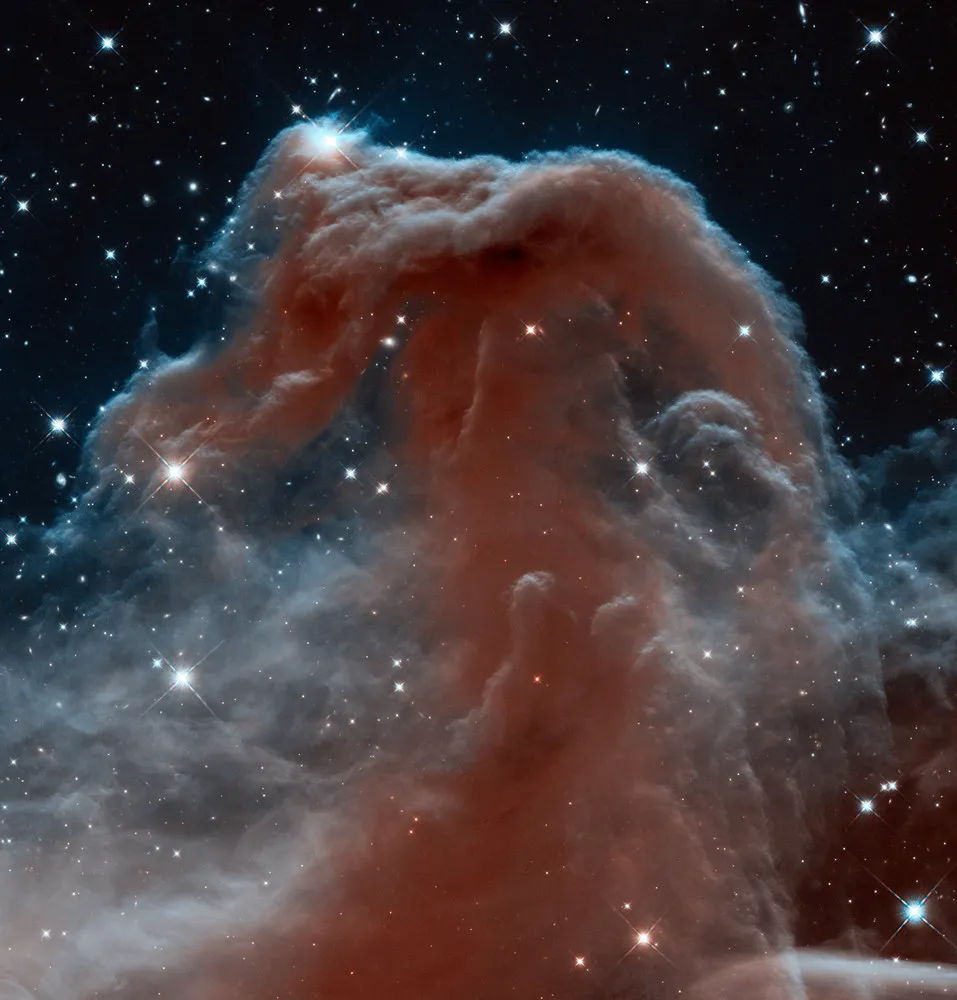|
This new Hubble image shows part of the sky in the constellation of Orion. Rising like a giant seahorse from turbulent waves of dust and gas is the Horsehead Nebula, also known as Barnard 33. The Horsehead Nebula is located about 1,500 light years from Earth in the constellation Orion. The nebula was first recorded by the Scottish astronomer Williamina Fleming. The official discovery plate that registered the object was number B 2312. It was taken with the Bache telescope in Cambridge on February 6, 1888, with an exposure time of 90 minutes. The Horsehead Nebula formed from a collapsing interstellar cloud of material, and glows as it is illuminated by a nearby hot star. The gas clouds surrounding the Horsehead have already dissipated, but the jutting pillar is made of stronger stuff that is harder to erode. Astronomers estimate that the Horsehead formation has about 5 million years left before it too disintegrates. This nebula is a very well-known object and a popular target for observations, most of which show the Horsehead as a dark cloud silhouetted against a background of glowing gas. The new Hubble image shows the same region in infrared light, which has longer wavelengths than visible light and can pierce through the dusty material that usually obscures the nebula’s inner regions. The result is a rather ethereal and fragile-looking structure, made of delicate folds of gas – very different to the nebula’s appearance in visible light. (Photo by NASA/ESA/The Hubble Heritage Team/AURA/STScI)
|

